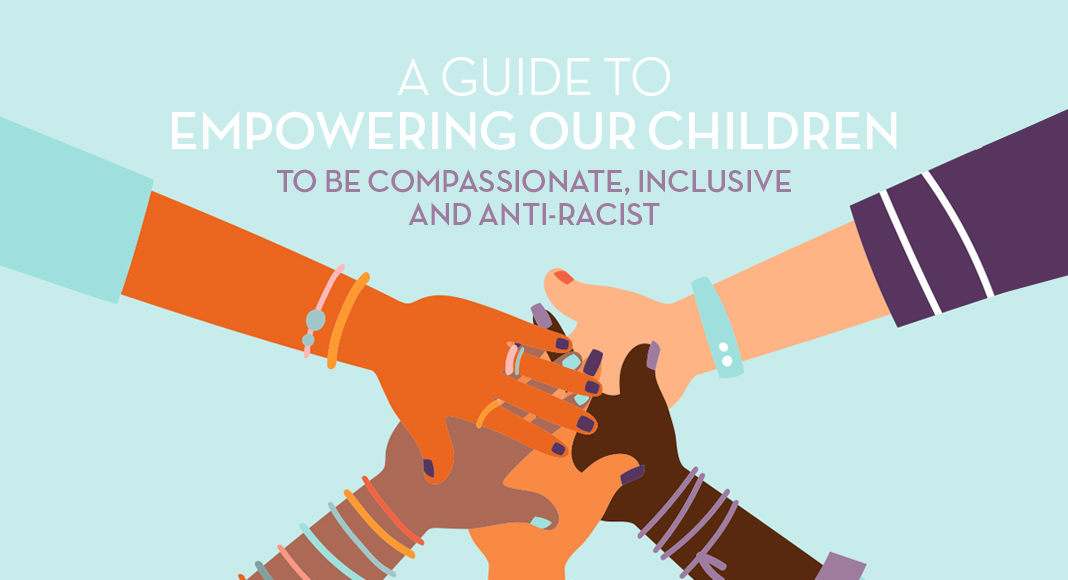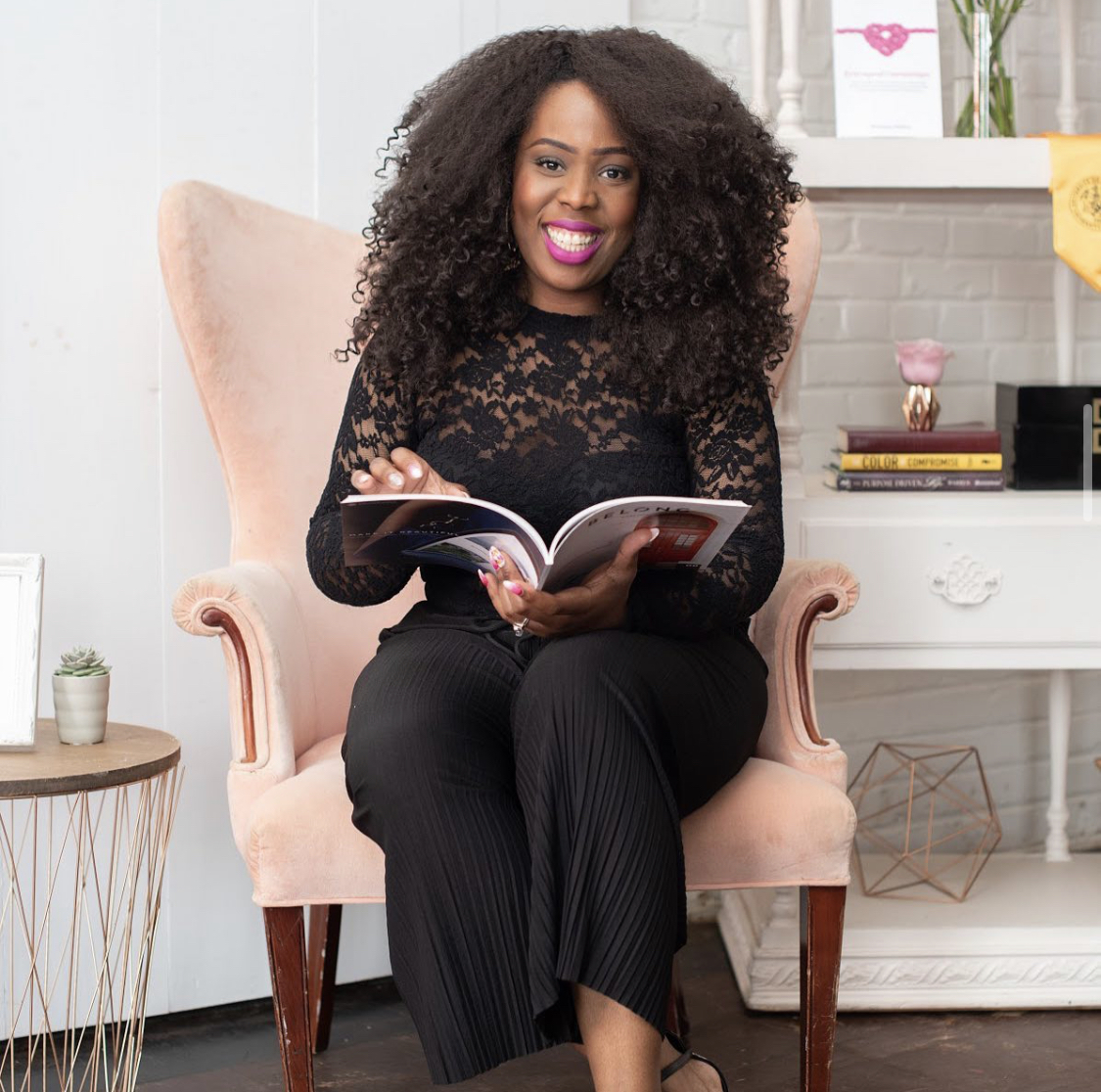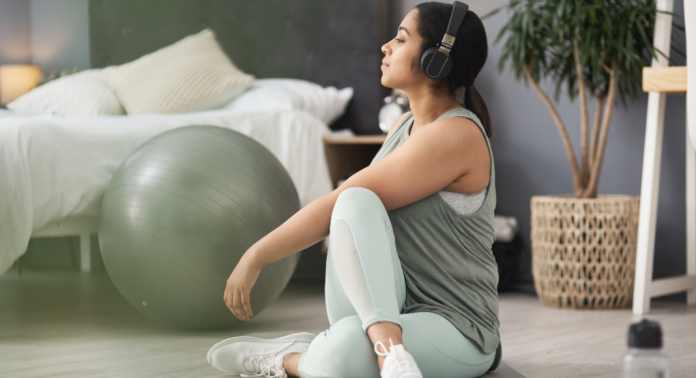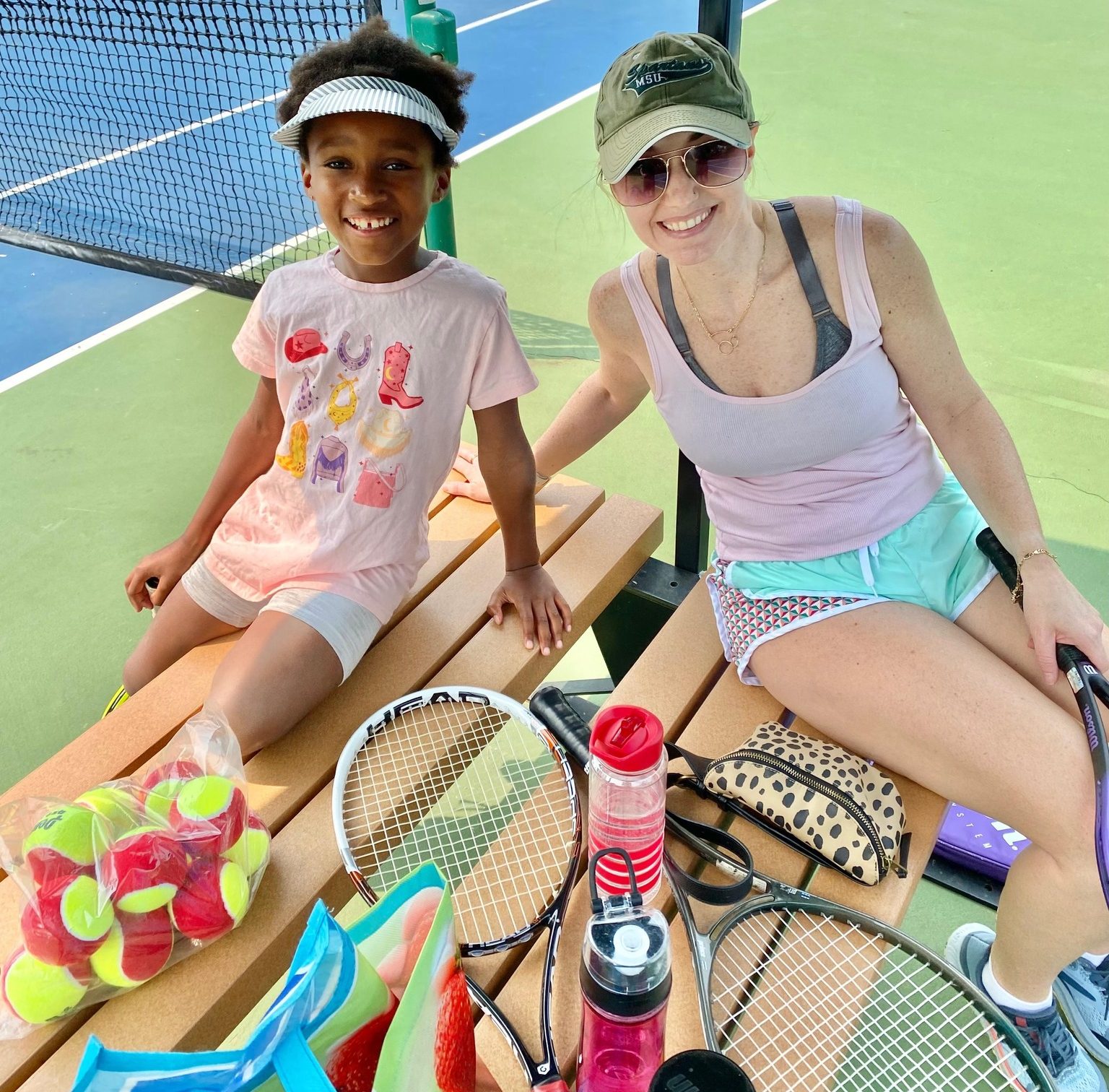If we have learned anything over the past year, it’s that we as humans have a lot of unlearning and a lot of educating—of ourselves and of our children—to do. It’s time to dedicate ourselves to understanding the past and, most importantly, changing the future. We can absolutely empower our children to be compassionate, inclusive, and antiracist. We can make a difference for future generations. The change starts here.
Bookmark this page. Come back and read day after day, week after week, month after month. Understand what it means to raise inclusive, actively antiracist families. Become a part of the solution.
5 Books That Teach Your Kids About Amazing Women in Black History
10 Picture Books with Main Characters of Color
50 Children’s Books That Celebrate Diversity
A Mighty Girl Civil Rights Book List
A Mighty Girl African American History Book List
Children’s Books by Black Women
Children’s Books With Strong Black Characters
No White Saviors: Kids Books About Black Women in US History
How to be an Antiracist – Ibram X. Kendi
I’m Still Here: Black Dignity in a World Made for Whiteness – Austin Channing Brown
The New Jim Crow: Mass Incarceration in the Age of Colorblindness – Michelle Alexander
So You Want to Talk About Race – Ijeoma Oluo
White Fragility: Why It’s So Hard for White People to Talk About Racism – Robin Diangelo
White Like Me: Reflections on Race from a Privileged Son
Why I’m No Longer Talking to White People About Race – Reni Eddo-Lodge
-
A Timeline of Events That Led to the 2020 ‘Fed Up’-rising
The Birmingham Children’s Crusade of 1963
Black Wall Street and the Tulsa Race Massacre of 1921, Explained
The Historical Legacy of Juneteenth
The Massacre of Black Wall Street
One Hundred Years Ago, a Four-Day Race Riot Engulfed Washington, D.C.
40+ Books for AntiRacist Teachers
100 Race-Conscious Things You Can Say to Your Child to Advance Racial Justice
158 RESOURCES TO UNDERSTAND RACISM IN AMERICA
Anti-Racism For Kids 101: Starting to Talk About Race
Article on Raising Race-Conscious Children
Combatting Stereotypes: How to Talk to Your Children
#HatchKids Discuss Microagressions
Here’s How W. Kamau Bell Talks About Race With His Kids
Looking for Excellent “Diverse” Books for Children? Start Here!
11 Fearless Black Women Your Kids Should Know
11 Ways for Teaching Kids to Be Inclusive of Others
13 Tips on How to Talk to Children About Diversity and Difference
Coming Together: Talking to Children about Race, Ethnicity, and Culture
How to Raise Kids to be Anti-Racist and Talk to Them About Racism
Racism and Violence: Using Your Power as a Parent to Support Children Aged Two to Five
Raising Race Conscious Children
Resources for Talking to Your Kids About Race
Teaching Your Kids About Diversity and Inclusion
Your Kids Aren’t Too Young to Talk About Race: Resource Roundup
A Kids Book About Racism by Jelani Memory
All Are Welcome by Alexandra Penfold
I Am Enough by Grace Byers
I Am Rosa Parks by Brad Meltzer
Mixed: A Colorful Story by Arree Chung
Same Difference by Calida Rawles
The Skin You Live In by Michael Tyler
The World Needs More Purple People by Kristen Bell
Sulwe by Lupita Nyong’o
We’re Different, We’re the Same by Bobbi Jane Kates (Sesame Street read along)
If you come across something you think would be a wonderful resource to add to this, please comment with it. We want to continue to expand our knowledge, continue to work on raising inclusive and antiracist children, and continue to teach those our families about the beautiful diversity of our world.
Books for Helping Children Learn About Martin Luther King Jr.
The legacy of Dr. Martin Luther King Jr. continues to thrive years after he changed the world forever. Today, we remember his powerful words and the impact his teachings had on so many of us.
While learning about Dr. Martin Luther King Jr.’s life and legacy, it is important to share the knowledge with our children so they can appreciate him as a leader and a great activist for civil rights. Here are some wonderful books about Martin Luther King Jr. to read with your children or recommend to them as we celebrate his legacy.
Books for Preschoolers
A Sweet Smell of Roses by Angela Johnson
I am Brave: A Little Book About Martin Luther King Jr. by Brad Meltzer
I am Martin Luther King, Jr. by Brad Meltzer
My First Biography: Martin Luther King, Jr. by Marion Dane Bauer
My Little Golden Book About Martin Luther King Jr. by Bonnie Bader
My Uncle Martin’s Big Heart by Angela Farris Watkins
The Story of Martin Luther King Jr. by Johnny Ray Moore
Who Was Dr. Martin Luther King Jr.?: A Who Was? Board Book by Lisbeth Kaiser and Stanley Chow
Books for Elementary Schoolers
Ain’t Gonna Let Nobody Turn Me ‘Round: My Story of the Making of Dr. Martin Luther King Day by Kathlyn J. Kirkwood
As Good as Anybody by Richard Michelson
A Place to Land: Martin Luther King Jr. and the Speech That Inspired a Nation by Barry Wittenstein
Be a King: Dr. Martin Luther King Jr.’s Dream and You by Carole Boston Weatherford
Happy Birthday, Martin Luther King by Jean Marzollo
I Am #4: Martin Luther King Jr. by Grace Norwich
I Have a Dream by Dr. Martin Luther King Jr.
Let the Children March by Monica Clark-Robinson and Frank Morrison
Love Will See You Through: Martin Luther King, Jr.’s Six Guiding Beliefs (as told by his niece) by Angela Farris Watkins
Martin Rising: Requiem for a King by Andrea Davis and Brian Pinkney
Martin’s Big Words: The Life of Dr. Martin Luther King, Jr. by Doreen Rappaport
Martin’s Dream by Jane Kurtz
Martin’s Dream (Ana + Andrew) by Christine Platt and Anuki Lopez
My Brother Martin by Christine King Farris
My Daddy, Dr. Martin Luther King, Jr. by Martin Luther, III King
My Dream of Martin Luther King by Faith Ringgold
March On! The Day My Brother Martin Changed the World by Christine King Farris
Martin and Mahalia: His Words, Her Song by Andrea Davis Pinkney and Brian Pinkney
National Geographic Readers: Martin Luther King, Jr. by Kitson Jazynka
The March on Washington (American Girl: Real Stories From My Time) by Bonnie Bader
The Story of Martin Luther King Jr. by Christine Platt
When Dr. Martin Luther King Jr. Wore Roller Skates by Mark Andrew Weakland and Patrick Ballesteros
Books for Middle and High Schoolers
A Time to Break Silence: The Essential Works of Martin Luther King, Jr., for Students by Martin Luther King, Jr.
Dear Martin by Nic Stone
Free At Last: The Story of Martin Luther King, Jr. by Angela Bull
Great Lives in Graphics: Martin Luther King by Button Books
Martin & Anne: The Kindred Spirits of Dr. Martin Luther King, Jr. and Anne Frank by Nancy Churnin
Martin Luther King Jr.: A Graphic History of America’s Great Civil Rights Leaders by Rachel Ruiz
Martin Rising: Requiem For a King by Andrea Davis Pinkney
Memphis, Martin, and the Mountaintop: The Sanitation Strike of 1968 by Alice Faye Duncan
Portraits of African-American Heroes by Tonya Bolden
Who Was Martin Luther King, Jr.? by Bonnie Bader
If you have a recommendation for books about Martin Luther King Jr., please leave a comment with it so we can add it to our list!
What You Should Know About Your Thyroid
DISCLAIMER: The following post outlines the writer’s personal journey with Graves disease + her thyroid. It is not intended to act as medical advice. As always, please consult your doctor with any questions about your thyroid and/or thyroid diseases.
When I was nearly ten weeks pregnant with my first child, my husband and I received an alarming call from an endocrinologist, a specialist doctor I had never met or thought I would need to meet. My OB/GYN had been very concerned with my routine prenatal blood work and had reached out for her expert opinion.
My thyroid levels were dangerously high. So high, in fact, that they were worried about me going into cardiac arrest and possibly losing the pregnancy. We drove over four hours from the vacation home we were staying at in upper Michigan to a Metro Detroit hospital emergency room, where I was immediately assessed.
My pregnancy, and every day after that, would never be the same. I was diagnosed with Graves disease, a thyroid condition. It had gone undiagnosed during my first pregnancy and is believed to have caused my miscarriage. At that point, it was inflicting a host of symptoms my previous OB/GYN had initially dismissed. I was treated and, after giving birth, had my thyroid removed so that it wouldn’t go haywire during subsequent pregnancies.
Thyroid Awareness Month happens every January. But it often doesn’t get as much attention as other awareness months, and many continue to be unaware of the statistics. Women are at higher risk for thyroid issues than men, with one in eight women developing problems during their lifetime, according to the Office on Women’s Health. Still, testing isn’t always routine during pregnancy, postpartum, or beyond.
What is your thyroid?
According to the Cleveland Clinic, the thyroid is a butterfly-shaped gland in the base of your neck that regulates a host of bodily functions–namely, metabolism and growth, through hormone secretion. On a smaller level, it helps control your heart rate, promotes digestion, and keeps your bones healthy and strong. To keep your body running smoothly, your thyroid hormone releases two important hormones–Triiodothyronine (T3) and Thyroxine (T4). How much of each hormone is released depends on the thyroid-stimulating hormone (TSH) secreted from the pituitary gland. You would be correct if you think it sounds like a delicate balancing act!
Too much or too little thyroid hormones can significantly impact the body.
What thyroid conditions can affect women?
In general, most women are affected by hyperthyroidism or hypothyroidism. These are umbrella terms that can occur due to other thyroid-related conditions, like Graves disease or Hashimoto’s thyroiditis.
Hyperthyroidism
Hyperthyroidism, according to the Mayo Clinic, is when too much thyroid hormone is secreted. Too much T4 and T3 and too little TSH usually indicate an overactive thyroid. These hormones can cause your body to burn through energy very quickly. As a result, you may experience:
- Fatigue
- Constant hunger
- Anxiety
- Hand tremors
- Hair loss
- Inability to concentrate
- Trouble sleeping
- Heat intolerance
- Increased sweating
- Restlessness
- Weight loss
- Flushed skin or a rash
- Irregular menstrual periods
- Goiter (a swollen thyroid gland that protrudes from the neck)
If not treated, a thyroid crisis could occur, in which an abnormal heart rate could lead to heart failure. Prolonged hyperthyroidism can also lead to weak bones (osteoporosis). Graves disease, a hereditary autoimmune disease, is the most common cause.
Hypothyroidism
Hypothyroidism, according to the Mayo Clinic, is the opposite, in which too little thyroid hormone is produced. An underactive thyroid means your body can’t receive the energy it needs, caused by your metabolism and digestive processes slowing down.
Symptoms can include:
- Fatigue
- Feeling cold all the time
- Weight gain
- Thinning hair
- Dry skin
- Joint and muscle pain
- Depression
- Slow heart rate
- Difficulty conceiving
- Heavy and irregular menstrual periods
If not treated, it can lead to dangerous conditions, such as heart disease or nerve damage. Hashimoto’s disease, an autoimmune condition, is the most common cause.
Thyroid Conditions + Womanhood
Thyroid conditions aren’t always extreme, and their side effects can make them easily misdiagnosed. Symptoms like brain fog or irregular menstrual cycles could have various other causes, like menopause or the chaotic experience of postpartum. Therefore, blood tests of all three hormone levels (T3, T4, and TSH) can go a long way in finding out whether or not your thyroid is to blame. For women, getting your thyroid levels checked can be very important.
Thyroid problems can affect menstruation, causing cycle irregularity and very heavy or light periods. If a woman is trying to conceive, thyroid conditions can make it extremely difficult. According to the National Library of Medicine, thyroid hormones may be a cause of anovulation (when ovulation doesn’t occur at all). Additionally, those with hypothyroidism may be more at risk of developing cysts on their ovaries, reports the National Institute on Health.
When pregnancy occurs, the mother’s thyroid hormones support the baby for the first few months. If her body is producing too little or too much thyroid hormone, there can be negative effects for both the mom and her baby, such as miscarriage, preterm labor, or stillbirth. Even women who are post-childbearing age can feel the effects of an abnormally functioning thyroid. They might struggle to lose weight, experience hair loss, have trouble concentrating, or have difficulty sleeping–all symptoms that can be attributed to motherhood in general when you’re just trying to survive raising little ones while juggling everything else!
As a woman ages, thyroid issues could trigger early-onset menopause. If hyperthyroidism is not addressed, it could exacerbate problems that affect older women, like osteoporosis.
Should you get your thyroid checked?
Typically, thyroid labs aren’t completed unless a woman has a family history of thyroid conditions or reports symptoms. Even in pregnancy, thyroid hormone levels may not be a part of prenatal screening. The March of Dimes states that most providers don’t check thyroid levels during prenatal or postnatal health visits unless there is an indication to do so; however, as many as 21 in 100 women can develop postpartum thyroiditis in which they become hypothyroid or hyperthyroid (or even both) in the first year after childbirth.
Therefore, according to the American Thyroid Association, all adults beginning at age 35 and every five years thereafter should get their thyroid checked. You may not need to request blood labs immediately. However, medical professionals encourage women to monitor themselves for thyroid disorder symptoms. Being conscientious of thyroid symptoms becomes even more important for women who are pregnant or hoping to become pregnant.
Fortunately, once a thyroid condition is diagnosed, it can often be easily treated. This includes during pregnancy. I was lucky to have an amazing endocrinologist and fetal-maternal medicine team who closely monitored me and my baby. Though I will have to take medication daily for the rest of my life, I credit my endo with preventing another miscarriage and helping me to go on to have three happy and healthy children without complications during or after pregnancy.
Taking care of yourself is of the utmost importance. Our team shares a bit about their own mental health journeys in order to inspire others to seek out the help they might need.
National Human Trafficking Prevention Month: Local Resources
Is human trafficking taking place in the zip code you currently live in? If you answered “I don’t think it is . . . ,” are you surprised to learn you’re incorrect? According to Hope Against Trafficking, every zip code in Michigan has reported instances of human trafficking. Every. Zip code.
Does that statistic shock you? The number of reported cases is only increasing. Human trafficking can include sex trafficking and labor trafficking. As a community, we absolutely must be aware, vigilant, and working towards changing this.
January is Human Trafficking Awareness Month. We wanted to bring awareness to the topic, and also offer local resources that are available in our communities. Whether you or someone you know is a victim of human trafficking, or you simply want to know where you can volunteer and support locally, we hope this list is helpful for you. And, if you know of any local resources we should add, be sure to let us know.
*The National Human Trafficking Hotline phone number is (888) 373-7888. It is available 24/7 in a wide variety of languages. If you or someone you know is in need of support, call the hotline or visit the National Human Trafficking Hotline’s website.
Local Resources for Human Trafficking Awareness Month
Avalon Healing Center | Detroit | (313) 964-9701
Located in Detroit, Avalon Healing Center is a nonprofit organization that provides trauma-informed care for those who are looking for support. The services they provide are confidential and free. Some of the areas in which they focus their support on include social justice, crisis intervention, acute and non-acute assault, and human trafficking, among others.
Their website contains a wealth of information and resources on a variety of subjects. If you’re interested in becoming involved, you can fill out an application to become a volunteer with their organization.
*If you need support: there is a phone number link at the bottom of their website. Their crisis number, available 24/7, is (313) 474-SAFE.
Hope Against Trafficking | Pontiac | (248) 499-8416
This organization works with survivors of human trafficking using a trauma-informed, victim-centered approach. Those they work with develop their own individual plan for how to move forward, and they also help them identify and create goals to work towards. Their residential program provides housing, rent-free, for two years. They also have community education resources.
There are numerous ways to become involved with the work that Hope Against Trafficking is doing. You can apply to be a volunteer or fundraise, just to name a couple of ideas.
*If you need support: fill out this contact form on their website.
Michigan Abolitionist Project | Utica
The Michigan Abolitionist Project is working to educate on human trafficking, engage the community in activities centered on the root causes, and eradicate human trafficking both locally and non-locally. They have local community groups but also work closely with local task forces and coalitions. And, they’re working really hard to bring awareness to this complex issue.
Their website also contains a lot of information about all the ways you can be involved–and all the facts on human trafficking. It’s extremely eye-opening. If you’re interested in becoming involved, you can check if there is an active community group in your area, or attend a virtual Volunteer Interest Meet-Up.
Pearls of Great Price Coalition | Plymouth
Pearls of Great Price is working to prevent human trafficking in all forms. They represent various churches in the area and host monthly meetings. Pears of Great Price works closely with area organizations as well, such as Sparrow Freedom Project and Sanctum House. If you’re interested in being involved with their work, you can volunteer with them, join their mailing list, or make a donation online.
Sanctum House | Novi | (248) 574-9373
Sanctum House is a safe home for women survivors of human trafficking ages 18 and older. It’s voluntary and a 24-month program. They offer trauma-informed support, mental and physical healthcare, therapy, job training, community action, and more.
There are many ways to become more involved with the important work that Sanctum House is doing. Their website lists volunteer opportunities, donation lists, and more.
*If you need support: fill out this contact form on their website.
Sparrow Freedom Project | New Hudson
Sparrow Freedom Project is building a community that is led by survivors of human trafficking. Together with allies, businesses, organizations, and neighbors, they hope to change what’s happening in our communities. Their support services include access to items like groceries, clothing, emergency shelter, transportation, and home furnishings, to name a few. Financial assistance can be applied for as well.
If you want to help Sparrow, you can do things like become an ally, fundraise, or volunteer. There are even more ideas for ways to support their work on their website.
*If you need support: fill out this contact form on their website.
The Joseph Project | Grosse Pointe Woods | (855) GEN-5020
Working with attorneys, The Joseph Project connects human trafficking survivors with the pro bono legal services they need. They hope to empower survivors and help them take control of their future.
For volunteer opportunities, you can fill out their volunteer contact form.
*If you need support: fill out this contact form on their website.
County-Level Resources
You can also search online for the website for the county you live in, and it should bring up local resources to assist and support you. We’ve linked a few of the major counties below.
- Macomb County Anti-Trafficking Task Force
- Oakland County Human Trafficking Task Force
- Prosecutor’s Office of Washtenaw County
Every. Zip code. Every zip code in Michigan has reported cases of human trafficking. We must come together as a community to help those who are impacted by this.
If you’re looking for more ways to support local organizations, check out our Local Giving Guide.
How to Ring in the New Year with Intention
Like many, I ring in the new year with a list of resolutions. Historically, each focused on “fixing” specific behaviors like working out more, saving money, stressing less . . . blah, blah, blah! All of this feels rigid, daunting, and even unattainable. And it reminds me of all the times I didn’t or couldn’t keep up with the resolution. Resolutions are a setup for failure. So, this year I will ring in the new year with intention.
In 2024, I will embark on a transformative journey, steering away from the fixation of “fixing” and instead focusing on setting a purposeful path that fosters growth and flexibility. I will set intentions over resolutions, and I welcome you to join me.
 But before I set intentions, it’s important to reflect on where I have been and my core values. Last year, what went well? What was challenging? What truly matters to me? Aligning intentions with values adds depth and authenticity to the journey. It’s time to change our mindset and set ourselves up for success in 2024.
But before I set intentions, it’s important to reflect on where I have been and my core values. Last year, what went well? What was challenging? What truly matters to me? Aligning intentions with values adds depth and authenticity to the journey. It’s time to change our mindset and set ourselves up for success in 2024.
From Work Out Daily to Listen to Your Body
The old resolution: Exercise daily.
The new intention: Listen to your body and respond with kindness.
Coming from years working in corporate retail, I can tell you that companies are hyper-focused on selling workout apparel, gym memberships, and exercise equipment in January because the consumer’s mindset is all about changing their body. But what if instead of changing our body, we embrace it and listen to it?
In a society that often glorifies busy schedules and rigorous fitness routines, the intention of listening to your body is a revolutionary act of self-love. Rather than chaining yourself to a demanding daily exercise regimen that will be hard to maintain, pay attention to the cues your body provides.
Is it asking for rest? Is it craving movement? By fostering a deeper connection with your body, you empower yourself to make choices that align with your physical and mental well-being. Let your body guide you, whether it’s a Pilates session, a walk, a run, or a day of rest.
From Reducing Stress to Saying “No”
The old resolution: Reduce stress.
The new intention: Say “No” more often and prioritize yourself.
As a mom and entrepreneur, I find myself caught in the whirlwind of responsibilities; I’m sure you can relate. The resolution to reduce stress can feel like a good idea but can also feel like an unattainable dream. Instead, shift the focus to the intention of saying “no” to things that are not a priority. Stop the perpetual cycle of people-pleasing and start prioritizing your mental health. It’s an act of self-advocacy; a declaration that your well-being matters. Embrace the power of “no” to create space for what truly aligns with your values and brings you joy.
From Reading Daily to Lifelong Learning
The old resolution: Read more.
The new intention: Embrace lifelong learning.
I am a picture book author; my job is to read, and I LOVE it. I wish I had more time to do it. But, setting a resolution that tells me to read more will not change my time constraints. It will simply disappoint me when I don’t hit my reading goal.
Instead, let’s elevate it to a broader intention—embracing a lifelong reading and learning journey. This intention encourages a mindset shift from a specific, time-bound activity to a continuous journey of discovery. Explore audio books, podcasts (like The Unfiltered Mom or Mel Robbins), attend workshops, and engage in conversations that challenge your perspectives. The intention of lifelong learning expands beyond the confines of a resolution, fostering intellectual growth and adaptability.
From Saving to Purposeful Spending
The old resolution: Save more.
The new intention: Be intentional and purposeful with your spending.
Money management has always been at the top of my resolutions, but the systems I put in place never held. Instead of fixating on creating spreadsheets or downloading the latest app to help you manage your money, consider the idea of being intentional with your spending. Cultivate a mindful approach to your finances, aligning your spending with your values and priorities. This intention involves understanding the difference between needs and wants and making intentional choices that resonate with your financial goals. It’s a holistic approach that invites awareness into your relationship with money, transforming a resolution into a purposeful financial journey.
It’s a transformative shift from fixing behaviors to nurturing a mindset that allows exploration, self-compassion, and genuine fulfillment. Celebrate progress, not perfection. Intentions allow for flexibility and growth. Celebrate the progress you make every day, acknowledging that the journey is as significant as the destination.
As we stand on the cusp of a new year, let us embark on this journey together, celebrating the beauty of intentions that resonate with our hearts.
A new year doesn’t have to mean new stress. Charmaine shares why New Years goals may be stressful, and what to do instead.
The Weight of Food Allergies + How You Can Help
In the Dark by Karli McNeill
With rainbow lights rolling
And white noise humming
A request to snuggle will be made
Blankie wrapped loosely
And Ellie tucked closely
Together we sing, a sweet serenade
His skin tacky to the touch
Am I doing enough? Or too much?
I pray rashes from today will fade
Sleep well. Dream well.
Rest well. Please . . . be well.
Please don’t take my sunshine away.
The Weight of Food Allergies
I wrote this poem after a tough skin day with my son. We went through our bedtime routine, which involves layers of skin products. I was debating if I needed to give him a dose of Benadryl to help with him scratching at his legs. I’m always weary of over-medicating, but also don’t want him to be in any discomfort.
I hardly made it through singing our normal bedtime song You Are My Sunshine before the tears started flowing and the weight of the mental load of his allergies and skin issues became just a bit too heavy for me at that moment. Getting my feelings out through poetry helps me cope.
He is my youngest of two sons and will be three in June. He has seven food allergies, eczema, sensitive skin, and asthma. We have had countless doctor’s visits, ER visits, and pokes and prods. He has become a professional patient and honestly handles blood draws better than I do. He self-soothes with deep breathing when things get tough, and he knows what his EpiPen is for.
This little boy also has the most infectious laugh. He will brighten up any room with his loud singing and phenomenal dance moves. He goes with the flow and is happy to chill as long as he has a good snack and someone to share it with. My son is so much more than his allergies. We try our hardest to build a life and systems that allow him to move through life with as few barriers as possible.
Moving Through the World with Food Allergies
Taking a two-year-old into the world with multiple food allergies is scary. He can’t tell me when he feels a symptom coming on. We don’t let him eat certain things, and he doesn’t quite understand why. He can’t speak up for himself when an allergen is nearby. His big brother is quick to ask, “Will that hurt Mayer’s belly?” when a new food or treat comes along, but my span of control does not cover every situation he could encounter.
Food allergies can be life-threatening. According to Food Allergy Research and Education, there are 200,000 people in the United States each year who require emergency medical care for allergic reactions to food.
I notice every scratch, every new rash, every heavy eye blink, and every cough. I also notice every belly laugh, every new word and phrase, and every smile gifted to us. The constant body scan my mind runs on him collects every piece of information–the goodness of my son, and also the potential red flags of a life-threatening allergic reaction.
As a family, we make hard decisions of what events to attend or what restaurants to eat at. Each decision, we evaluate if we have the mental resources at the time to ask enough questions to feel “safe enough” to go somewhere, or if our own tanks are so empty that it’s just safer to skip the evaluation and stay home. As he gets older (and outgrows more allergens–in 2021 we were working with ten food allergies) and we get more seasoned with this lifestyle, I hope things will be a little easier. For now I will always have two EpiPens, a day’s worth of snacks, and a Mayer-safe cupcake and pizza slice in tow for every birthday party we attend!
How You can Foster Allergy-Informed Visits
We are lucky enough that our close friends and family take a couple extra steps to think about our son when they are hosting us, whether for a birthday party or just a play date. Each allergy parent handles situations differently–the best way to be prepared is to offer information to the parent up front. Here are some examples of what friends and family have done to lighten my mental load when Mayer is invited:
- Asked about allergies when the invite was extended. This lets me know that the parent is open to conversation and at least conscious of allergies, and lowers my anxiety levels when I go to ask them questions about the event. I try to do this when I plan events for work as well.
- Informed me of the food, drinks, and treats that will be served ahead of time. This lightens my mental load of wondering what to pack for my son. I can prepare safe food that matches what you’re serving. Or if it’s safe food, then I can pack a little less stuff than normal. I don’t expect everything to be free of all his allergens. But simply knowing what will be there helps my risk evaluation. It’s a huge bonus if the original packaging is available for me to look at the ingredients label!
- Made a goodie bag without food, or asked ahead of time what his favorite snacks and treats are. I know that sometimes the small trinkets can be annoying or seem like a waste, but both my kids love them and it’s great to not have to “take away” a gift because my son is allergic to it. If it is a treat-based goodie bag, it was so nice when my friends reached out to see what safe swaps they could make for him.
- Be open and pleasant during conversations. I hate feeling like a burden or an inconvenience, but I really do ask questions to ensure my son will be safe during our visit. Please don’t get defensive or offended with my questions–I’m not doing it to make you feel bad, I legit just have to weigh out the risks before we go anywhere!
As an allergy parent it is my responsibility to seek out information and evaluate the safety of my son at any location and I do not expect accommodations everywhere, but these are simply small steps you can take to make it a little easier for your friends with allergy kiddos in tow. Even just knowing that my friends care about the safety of my son helps so much, and I hope these prompts can help you foster an inclusive environment for the allergy kids in your life too.
Looking for more resources on food allergies? Check out Julie’s list of allergy-friendly restaurants in + around Detroit!
8 Realistic Healthy Habits for the New Year
Here it is . . . the new year! Every year it’s the same thing: eat healthy and exercise to maintain or get back into shape. But after two or three weeks into the new year, old habits start creeping back. And there she is: the same old . . . me!
Well, if you want to change this for 2024, then tell yourself over and over and over again that YOU CAN DO THIS! And girrrrl . . . I know, It’s easier said than done. To do this, you need to really dig into your WHY (why do you want to change?), your WHO (who are you changing for?), and your WHAT (what are you doing about it?)!
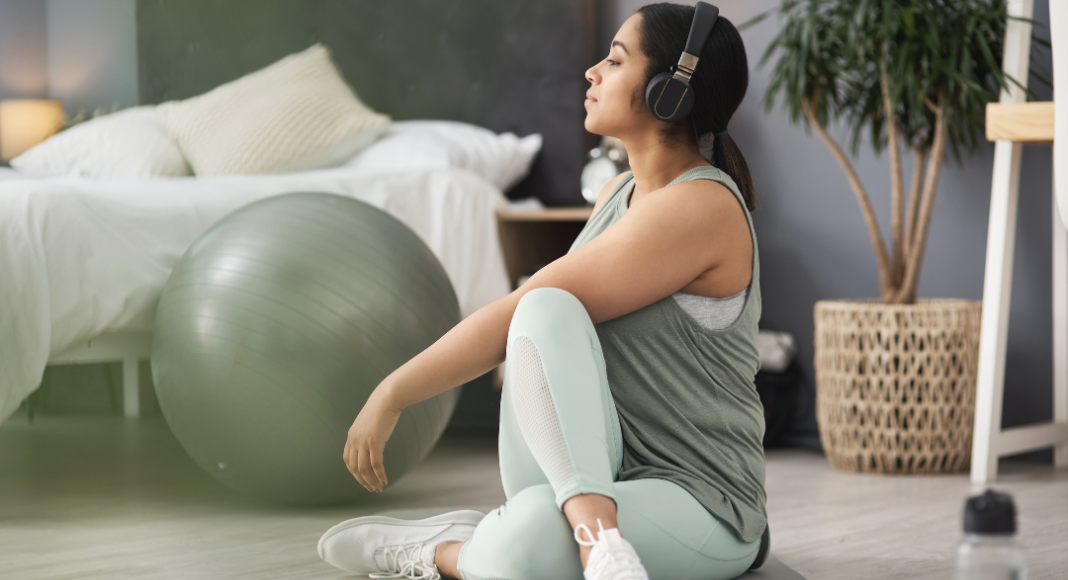 I’m sharing eight realistic healthy habits you can incorporate into the new year to help you make those positive changes!
I’m sharing eight realistic healthy habits you can incorporate into the new year to help you make those positive changes!
Find an exercise you’re passionate about.
This was a game changer for me in 2023. Find your passion–whether it’s dancing, swimming, walking, or boxing. I never knew that boxing was my thing until I tried it out. And I love it! Try something new or different, because you may just need to get out of your everyday, boring “workout rut-ine!”
Focus on nutrition.
As a family, it’s hard because what the kids eat isn’t always what you want to eat, and vice versa. However, for healthy habits focused on nutrition, DISCIPLINE is what makes you strong. Say what you’re eating out loud and see if it sounds appetizing or healthy to you! This is definitely my weakest change, because there’s always a birthday or occasion where I can make up excuses about why I need this cake, ice cream, or cookie!
Now that I am older, my body can’t handle all the things I used to eat, so that is the reason I keep telling myself over and over again.
Get enough sleep.
The National Heart, Lung, and Blood Institute recommends getting seven to nine hours of sleep a night. Yikes, good luck! As mothers, we have too many interruptions that go bump, wahhh, or if you’re like me, an old dog that needs to go out at 3:00 a.m.! Uninterrupted sleep is truly a luxury in my mind. But, listen to your body, and if you’re tired . . . REST. You deserve it!
Go to the doctor.
If you’re like me, going to the doctor is always a joy because I love my doctor. But, just make sure you’re visiting your doctor like you do for your kids. Keeping you healthy first will keep your kids healthy, too!
Identify stress triggers.
What triggers your stress level? Identify these factors and remind yourself to breathe and say out loud: “Everything will be okay!” Do something calming, or take your mind off what is stressful and think of your happy place. For me, it’s toes in the sand!
Plan to be around people.
What gives you energy? I love to meet and talk to different people! Making plenty of plans and creating more social activities–like joining a bowling league or planning monthly get-togethers with friends and family–will keep you happy and healthy!
Remember the importance of hydration.
Water sounds so amaaaazing–especially when you think about how we are so lucky to have access to clean, pure drinking water. There is still an abundant number of people who don’t have easy access to safe water in our world. Think about this, and you will drink and feel thankful for something we take for granted every day. (Another way to remember to hydrate is to set an alarm!)
Try to limit screen time.
Yes, I know. How in the world can you limit screen time in a world like today? This is something I personally need to work on, only because my job relies on it. Again, setting an alarm is a great way to do this. Try to create more social activities as opposed to social media; this will help with reaching for the phone out of habit.
I know these healthy habits are a lot to think about for 2024. But, repeating this over and over helps. And again, remember: WHY are you doing this? WHO are you doing this for? And WHAT are you doing about it?




